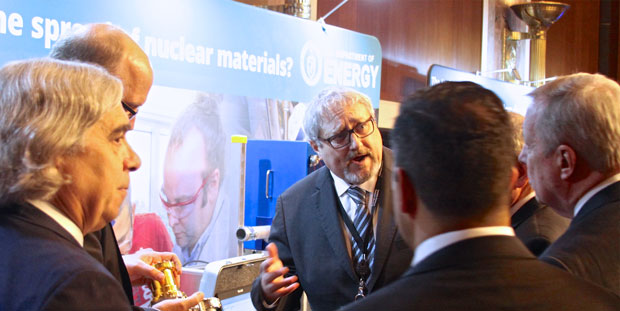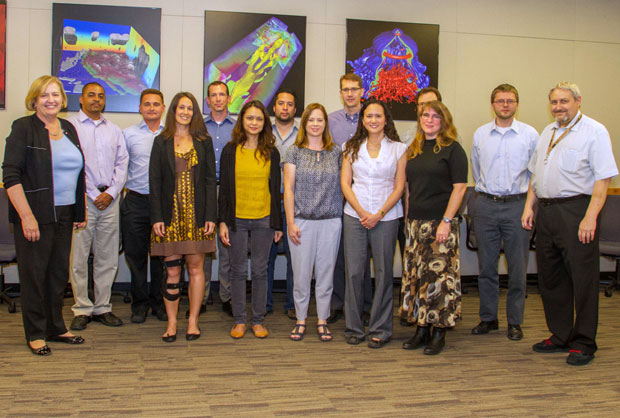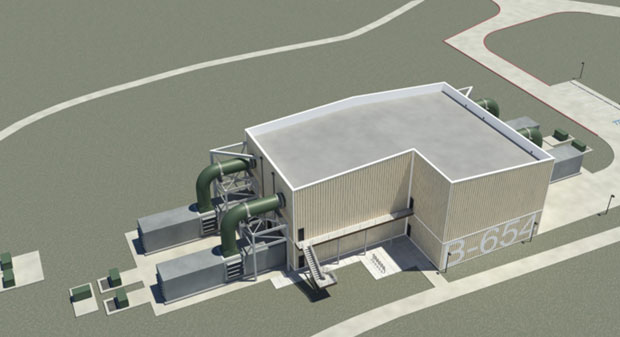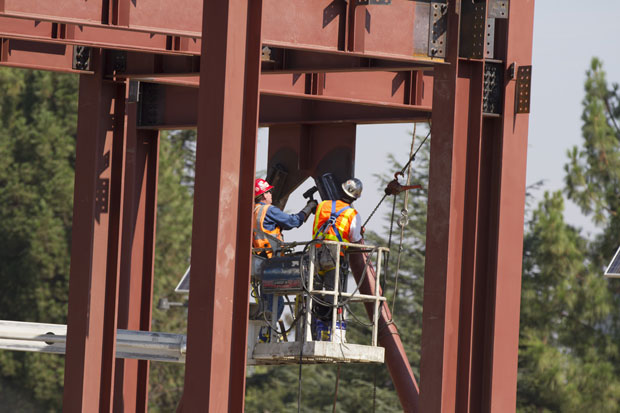Positioning the Laboratory for continuing science and technology excellence directed at important national missions LLNL Annual LLNL Annual LLNL Annual
In FY 2015, Laboratory managers focused on engaging stakeholders, contributing to NNSA enterprise-wide efforts and new initiatives, and building for future successes.
A Year of Strategic Engagements
With the vision of Livermore continuing to serve the nation as “A New Ideas Laboratory,” the LLNL management team engaged wide-ranging audiences in FY 2015 to listen to stakeholders’ needs. The Laboratory welcomed visitors from DOE and NNSA headquarters, Congress, and the executive branch, as well as work sponsors. LLNL also hosted conferences and workshops on wide-ranging topics such as modernization of nuclear forces, the future of deterrence, additive manufacturing, and workforce diversity. These strategic discussions serve to strengthen relationships and ensure that LLNL’s “Science and Technology on a Mission” is aligned with work sponsors’ priorities and long-term national needs. They have also provided a foundation for strategic planning activities launched at the end of FY 2015.
Technical Leadership in the NNSA Complex
Livermore is actively participating in—and providing leadership for—many NNSA/DOE initiatives to solve complex-wide issues. For example, LLNL researchers are pursuing innovative approaches such as pit reuse and additive manufacturing to help transform the complex and make it more cost effective. Livermore is also assisting other sites to improve weapons surveillance technologies and safety processes. In addition, LLNL has provided leadership in acquiring next-generation supercomputers, and is spearheading initiatives to improve infrastructure management across the complex. In the area of workforce management, Livermore hosted a conference on diversity and inclusion convened under the auspices of the DOE National Laboratory Directors’ Council (see the box below).
Sustaining Workforce Excellence
The Laboratory’s principal strength is its outstanding workforce. Accomplishments, activities, and initiatives highlight the quality of our staff and the importance of recruiting and nurturing future technical and programmatic leaders. In FY 2015, 10 Laboratory scientists were named fellows of the American Physical Society (see , Workforce Recognition for individual awards), and 17 scientific journal covers featured papers with LLNL authors. Livermore’s newly launched Early and Mid-Career Recognition Program honored 15 scientists and engineers for their exceptional accomplishments on the path toward technical leadership at LLNL. Selected from 99 outstanding nominees, the first-year winners of this annual program received a cash award and part-time institutional funding to pursue research activities in their area of interest.
Livermore’s educational outreach programs range from activities designed to interest young students in scientific careers (see , Community Connections ) to those that bring prospective future scientists and engineers to LLNL to participate in research. In FY 2015, a record-breaking number of students—more than 700—participated in LLNL’s research and intern programs. Nearly 100 postdoctoral fellows were hired; more than half of those who completed their terms as fellows stayed on to work at the Laboratory. A new outreach initiative is LLNL’s participation in DOE/NNSA’s Cybersecurity Workforce Pipeline Consortium. The Laboratory will help develop curricula at 13 historically black colleges and universities (and a South Carolina school district), and bring students to LLNL to participate in the Cyber Defenders Program (see , Global Security ).
New Facilities for the Laboratory
Ground was broken in FY 2015 for two new facilities: a new armory for the Protective Force Division and a modular supercomputing facility. Construction of the much-needed armory began in April and was completed in November. To be completed in FY 2016, the supercomputing facility will provide computer room space to accommodate a variety of high-performance computing architectures, including water-cooled machines. NNSA’s Advanced Simulation and Computing Program is spearheading development of next-generation supercomputers for stockpile stewardship. The unclassified facility will promote collaborations with U.S. industry and academia to advance hardware and software solutions.
Expanded partnerships and collaborative research will benefit further from constructing a new, much-expanded High Performance Computing Innovation Center (HPCIC) at the Livermore Valley Open Campus (LVOC). In October 2015, NNSA gave approval to LLNS to seek partners to finance construction of the facility, which will house 350 to 400 people. Collaborative activities at HPCIC bring top-notch scientists and engineers to Livermore to conduct cutting-edge research at world-class facilities and capabilities. The work supports LLNL mission needs and benefits industry and university partners.
LLNS Board of Governors Activities
The LLNS Board of Governors and its committees provided oversight to the Laboratory. The committees delved into issues crucial to mission and mission-support activities. The Board participated in external review committees (ERCs), panels of independent experts, to critically assess the quality of LLNL’s technical workforce and research efforts, and how effectively these efforts advance Livermore’s missions and meet future national needs. Advice and counsel provided by the ERCs, which held seven meetings in FY 2015, led to substantive actions by the Laboratory. The ERC reports provided DOE/NNSA with an independent validation of quality, and consistently affirmed the mission relevance and high impact of LLNL research. The Board also charters Functional Management Reviews (FMRs) to examine issues on an as-needed basis. Seven FMRs were completed in FY 2015 in topical areas ranging from safety basis guidance to safeguards and security compliance.
Workforce Diversity and Inclusion
Fourteen laboratory directors and more than 60 participants representing each of the 17 DOE national laboratories met in Livermore to share best practices and explore new ways to attract, retain, and develop a more diverse workforce. Moderated by Patricia Falcone, LLNL deputy director for science and technology, the workshop was held under the auspices of the National Laboratory Directors’ Council. Participants—representing a cross section of experts from the laboratories—identified steps that the laboratories might take both individually and as a network. Sandia National Laboratories’ Sandra Begay-Campbell is shown speaking in one of the panel discussions.









